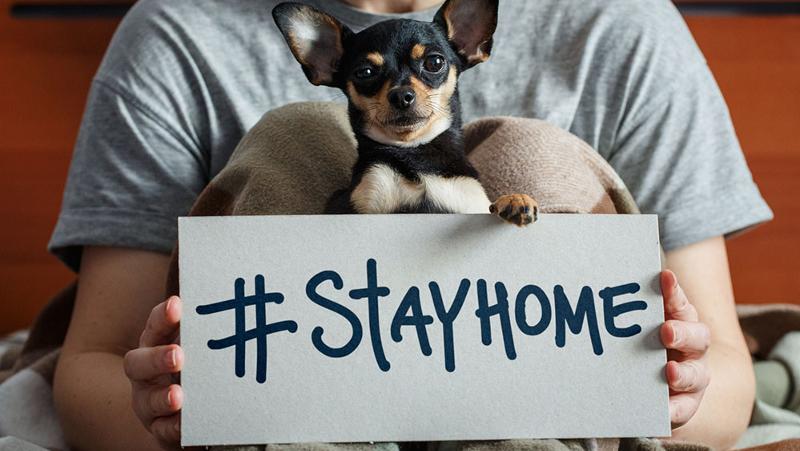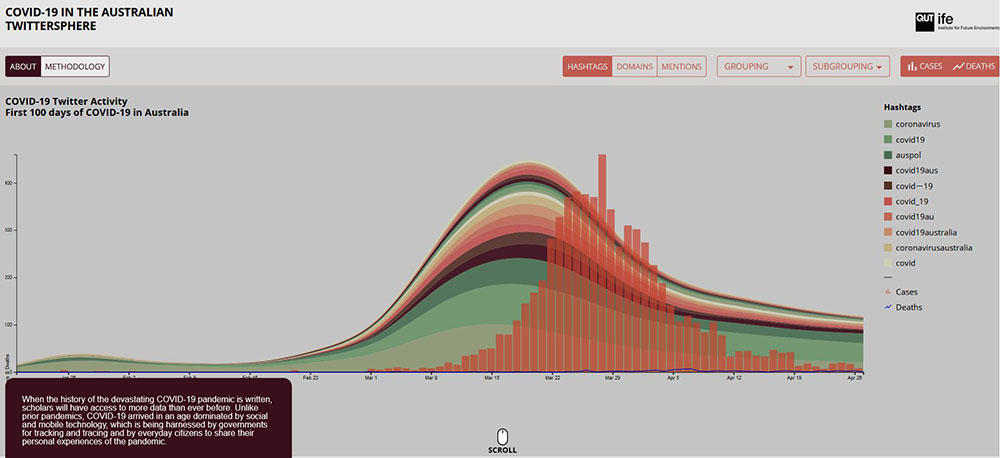
Twitter users were well ahead of the Federal Government in calling for shutdown of large sporting events, mass gatherings and schools, according to an interactive visualisation of the millions of tweets during the first 100 days of COVID-19 on the Australian Twittersphere.
- Analysis of 2.8 million tweets mentioning coronavirus from January to April
- Twitter users called urged governments for shutdown from start of March
- Twitter users turned to medical experts for information while governments discussed measures
- When included, users overwhelmingly shared links to news stories
QUT researchers from the Digital Observatory led by Associate Professor Daniel Angus collaborated with the QUT’s ViseR (Visualisation and e-Research) team to produce the interactive visualisation which maps topics, hashtags, websites, social media consumption from January to late April.
Professor Angus said the team analysed 2.8 million tweets that directly mentioned the novel coronavirus.
“In early to mid-March Twitter users began putting pressure on the federal and state ministers to shut down non-essential gatherings to contain #coronavirus, the leading hashtag followed by #covid19,” Professor Angus said.
“The third most common hashtag at this time was #auspol, long used for political discussion.
“As the politicians were discussing public health measures and restrictions, Twitter users turned to and shared information from medical experts Norman Swan and Bill Bowtell
“These experts explained how to #flattenthecurve by setting out simple measures everyone could take to protect themselves and others - washing hands, coughing into a tissue or elbow, staying home if unwell. They also called for restrictions on mass gatherings, including schools, to curb the spread of the virus.”

Professor Angus said that while much of Australia was still operating in business-as-usual mode, Twitter users promoted specific hashtags to raise awareness and voice concern with #flatteningthecurve #socialdistancing, which soon gave way to #stayhome and #lockdown.
“By mid-March a high volume of tweets concerned travel #qantas, sport #nrl #afl and the economy #ausecon. Interest in travel fell away but the issues and investigations of the #rubyprincess debacle gained sustained interest,” he said.
“As country-by-country statistics of cases and death were reported daily, Twitter users shared information from a combination of local and international media outlets such as The Guardian, ABC, New York Times and Washington Post (which provided free COVID-19 reports).
“They shared embedded hyperlinks from these media sources far more than any other website. To a lesser extent they also used and shared academic media and journals including The Conversation and Nature.
“As people settled into lockdown Twitter came alive with the exchange of podcasts, Soundcloud and Spotify as they turned to the arts online to entertain, alleviate boredom, and educate themselves and their children.”
Professor Angus said when the story of this pandemic is written historians will have an unprecedented amount of as-it-happened data from social media.
“Social media and mobile technology provide us with a never-before-seen window into the experiences and attitudes of people who lived through these times.”
First 100 Days of COVID-19 on the Australian Twittersphere
QUT Media contacts:
Niki Widdowson 07 3138 2999 or n.widdowson@qut.edu.au
After hours: Rose Trapnell, 0407 585 901 or media@qut.edu.au



